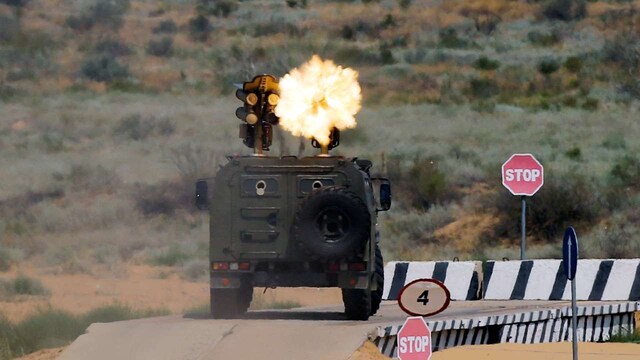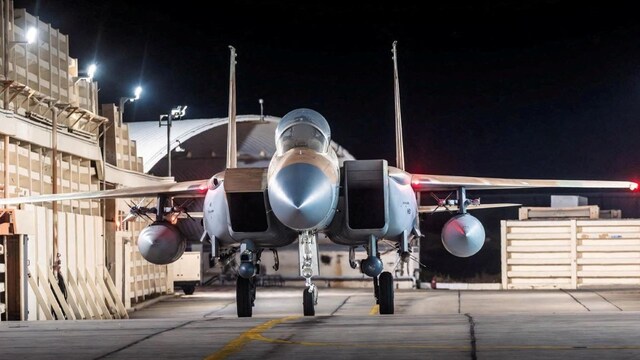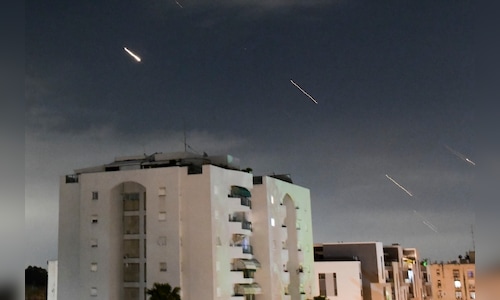[ad_1]

 1 / 8
1 / 8Iran-Israel war: Ballistic missiles are an important part of the arsenal at Tehran’s disposal. According to the US Office of the Director of National Intelligence, Iran is armed with the largest number of ballistic missiles in the region. Here are some details:

 2 / 8
2 / 8Iran’s missile capabilities | Iran’s semi-official news agency ISNA listed several missiles capable of reaching Israel. These include the ‘Sejil’ with a range of 2,500 km, the ‘Kheibar’ with a range of 2,000 km, and the ‘Haj Qasem’ at 1,400 km. The Arms Control Association confirms that Iran also has shorter-range missiles like the ‘Shahab-1’ and ‘Zolfaghar,’ and longer-range ones like the ‘Emad-1’ and ‘Sejil.’

 3 / 8
3 / 8Missile launch analysis | Experts believe Iran used a mix of solid- and liquid-fueled missiles in this attack. Solid-fueled missiles like ‘Haj Qasem’ and ‘Kheibar Shekan’ were likely launched. Liquid-fueled missiles like ‘Emad’ and ‘Khorramshahr’ may have also been used.

 4 / 8
4 / 8Iran’s growing missile infrastructure | A 2023 report by Behnam Ben Taleblu of the Foundation for Defense of Democracies highlights Iran’s ongoing development of underground missile silos and production facilities. These hidden complexes have become crucial to Tehran’s strategy of deterrence. In 2020, Iran made headlines by launching its first ballistic missile from an underground base, showcasing its advanced infrastructure. In June 2023, Iran unveiled its first domestically-made hypersonic missile, capable of traveling five times the speed of sound, which further complicates defense systems trying to intercept it.

 5 / 8
5 / 8Regional impact and response | Iran’s ballistic missile program is heavily influenced by North Korean and Russian designs, with support from China, according to the Arms Control Association. Additionally, Iran possesses cruise missiles like the nuclear-capable Kh-55, capable of reaching distances up to 3,000 km (1,860 miles).

 6 / 8
6 / 8Attacks across the region | Iran has used missiles in strikes across the region. In January 2024, it targeted Israel’s alleged spy headquarters in Iraq. In 2020, it launched missiles at US forces in Iraq after the US killed an Iranian commander.

 7 / 8
7 / 8Backing Yemen’s Houthis and Lebanon’s Hezbollah | The US has accused Iran of arming Yemen’s Houthis, who have recently fired missiles at Israeli targets during the Gaza war. Tehran has denied these claims, although reports suggest Iran has facilitated missile transfers between Russia and the Houthis. Iran’s backing of Hezbollah remains another flashpoint. The group has been fortifying its missile stockpiles, converting rockets into precision-guided weapons with Iranian assistance, according to statements made by late Hezbollah leader Hassan Nasrallah.

 8 / 8
8 / 8Iran’s role in Syria | Beyond Lebanon, Iran’s influence extends into Syria, where it has transferred precision-guided missiles to support Bashar al-Assad’s regime. Intelligence reports indicate that missile production capabilities have been moved to underground facilities in Syria, strengthening Tehran’s regional influence. (Info as per Reuters)
[ad_2]
Source link










